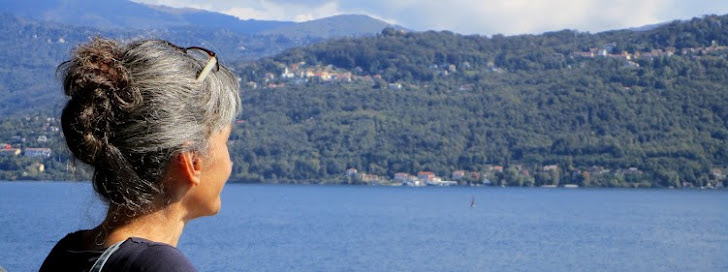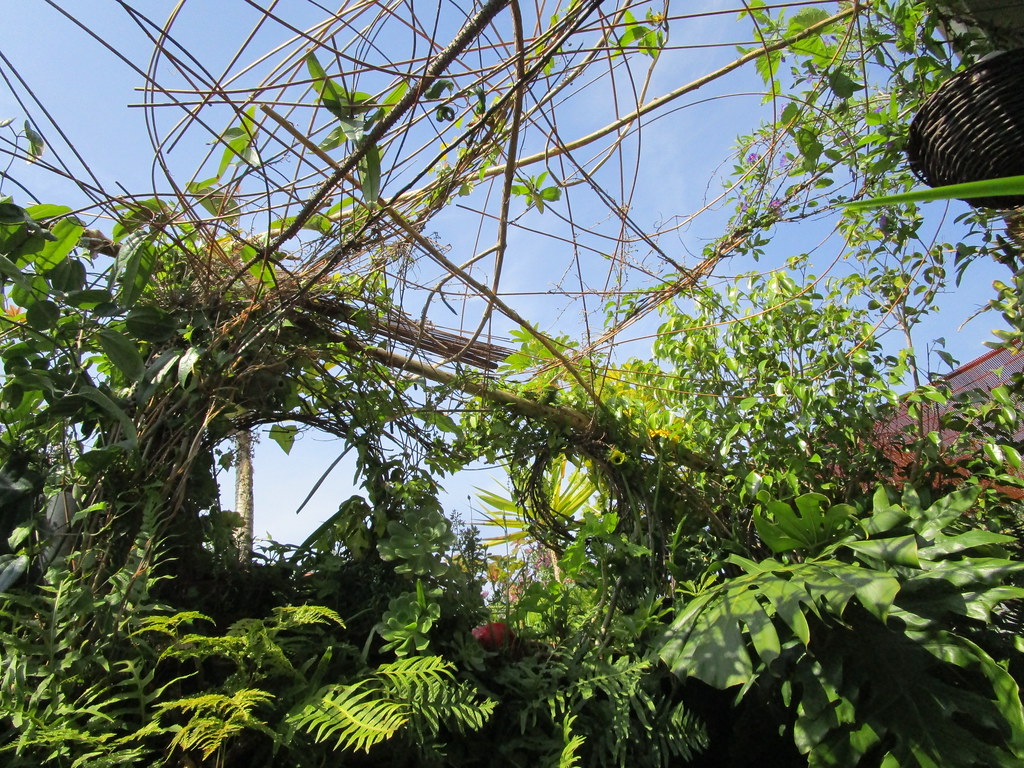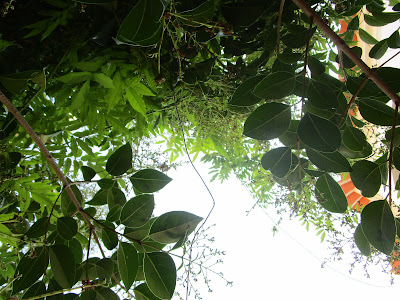"There is no linear increase in fluidity without extensive systems of immobility." Elliott & Urry, 2010. Mobile Lives. Image by Monica Pinheiro, license CC BY-NC-SA (CC)

"More than conversation at the interface, it is creative assemblages like these that explore and elaborate the particular dynamic capacities that digital media afford and the ways that through them humans and machines can perform interesting new effects (...) in uniquely particular ways." Lucy Suchman (2009). Human-machine reconfigurations: plans and situated actions.
Mar 31, 2019
March
by
Monica Pinheiro
0
comments
 Labels:
books,
fluidity,
immobilities,
infrastructure,
mobility,
platforms
Labels:
books,
fluidity,
immobilities,
infrastructure,
mobility,
platforms
Mar 29, 2019
Mar 20, 2019
March
"This is the third in a series of reports on the circular economy in support of the framing, implementation and evaluation of European circular economy policy from an environmental perspective. The two previous reports applied a systemic approach to framing a circular economy and to the products within it. This report on the bioeconomy addresses circularity aspects of bio-based products and the sustainable use of renewable natural resources." The circular economy and the bioeconomy — Partners in sustainability. Image by Monica Pinheiro, license CC BY-NC-SA (CC)
Mar 4, 2019
Feb 6, 2019
Jan 26, 2019
January
"(...) the feel of the stone beneath my feet, the colour and the smell of the sea, the caress of the breeze on my cheek, the texture of the air against my skin. I breathed deeply, as if inhaling the world anew" Lily Prior, 2001. La Cucina.
Image by Monica Pinheiro, license CC BY-NC-SA (CC)
Jan 14, 2019
Jan 2, 2019
January
"I planted seeds in a beautiful garden that I will never see and they will become tall trees. I left some love and fantasies. This is my legacy. Dream it all for me." Rise up, wise up, eyes up. Ibeyi, 2018. Image by Monica Pinheiro, license CC BY-NC-SA (CC)
by
Monica Pinheiro
0
comments
 Labels:
blue jacaranda,
Campo Pequeno,
gardens,
jacaranda,
Jacaranda mimosifolia,
january,
Lisbon
Labels:
blue jacaranda,
Campo Pequeno,
gardens,
jacaranda,
Jacaranda mimosifolia,
january,
Lisbon
Dec 25, 2018
Biodiversity-rich areas
"Urban Green Infrastructure (UGI) refers to the strategically managed network of urban green spaces and natural and semi-natural ecosystems situated within the boundary of an urban ecosystem. These high-quality, biodiversity-rich areas can help make cities more sustainable and contribute to solve many challenges, such as air pollution, noise, climate change impacts, heat waves, floods and public health concerns. As cities grow and develop, it is vital to improve the availability, quality and accessibility of UGI." MAES Joachim, ZULIAN Grazia, GUENTHER Susann,THIJSSEN Martijn, RAYNAL Julie, 2019. Enhancing Resilience Of Urban Ecosystems through Green Infrastructure (EnRoute). Image by Monica Pinheiro, license CC BY-NC-SA (CC)
Dec 21, 2018
Dec 19, 2018
(re)encountering spaces
"(...) new technologies inherently cause people to reencounter spaces. This is not a question of mediation, but rather one of simultaneous layering. (...) The spaces into which new technologies are deployed are not stable, not uniform, and not given." P. Dourish & G. Bell (2007). The infrastructure of experience and the experience of infrastructure: meaning and structure in everyday encounters with space. Environment and Planning B: Planning and Design, vol. 34(3), pp.414-430. Image by Monica Pinheiro, license CC BY-NC-SA (CC)
by
Monica Pinheiro
0
comments
 Labels:
december,
infrastructures,
layering,
space,
technology,
unpredictable
Labels:
december,
infrastructures,
layering,
space,
technology,
unpredictable
Dec 4, 2018
December
Image by Monica Pinheiro, license CC BY-NC-SA (CC)
Nov 29, 2018
Nov 28, 2018
Nov 22, 2018
November
Nov 11, 2018
November
Image by Monica Pinheiro, license CC BY-NC-SA (CC)
Oct 12, 2018
Geographies of Mobilities
"The rhythms of commuting are exceedingly diverse and shaped by numerous factors, including the mode of transport and its particular affordances, cultural practices and social conventions, modes of regulation, the distance travelled and the specificities of the space passed through. (...) The spatial scales of travel vary according to weather a journey conjoins home and work over short distances or extends many miles, or occurs on large highways, smaller roads or railways."Tim Edensor. Commuter: Mobility, Rhythm and Commuting. in Tim Cresswell and Peter Merriman (2016). Geographies of Mobilities: practices, spaces, subjects. Routledge. Image by Monica Pinheiro, license CC BY-NC-SA (CC)
Oct 11, 2018
Sep 23, 2018
Sep 3, 2018
September
Are full of trees and changing leaves."
in To The Lighthouse, Virginia Woolf.
Image by Monica Pinheiro, license CC BY-NC-SA (CC)
Aug 20, 2018
Aug 18, 2018
August
Image by Monica Pinheiro, license CC BY-NC-SA (CC)
August
"The sun glistens on the leaves in a way I've never seen. It's real. Not like the sun in the Dome. (...) Mother Nature is always one step ahead when it comes to beauty. She's quite the artist." Giovanna and Tom Fletcher, 2018. Eve of Man. Penguin Books. Image by Monica Pinheiro, license CC BY-NC-SA (CC)
Aug 16, 2018
Forests and Climate
In the begining of 19th century, "Humboldt was the first to explain the fundamental functions of the forest for the atmosphere and the climate: the trees' ability to store water and to enrich the atmosphere with moisture, their protection of the soil, and their cooling effect. (...) The effects of the human species' intervention were already 'incalculable', Humboldt insisted, and could became catastrophic if they continued to disturb the world so 'brutally'. " in Andrea Wulf, 2016, The Invention of Nature. Image by Monica Pinheiro, license CC BY-NC-SA (CC)
Aug 10, 2018
August
"Mycorrhizal networks (also known as common mycorrhizal networks or CMN) are underground hyphal networks created by mycorrhizal fungi that connect individual plants together and transfer water, carbon, nitrogen, and other nutrients and minerals. The formation of these networks is context dependent, and can be influenced by factors such as soil fertility, resource availability, host or myco-symbiont genotype, disturbance and seasonal variation." Image by Monica Pinheiro, license CC BY-NC-SA (CC)
by
Monica Pinheiro
0
comments
 Labels:
context dependency,
define,
distribution systems,
forest,
fungi,
interconnections,
mycorrhizal networks,
Plants
Labels:
context dependency,
define,
distribution systems,
forest,
fungi,
interconnections,
mycorrhizal networks,
Plants
Aug 2, 2018
Forest
‘forest’ means an area of land defined by the minimum values for area size, tree crown cover or an equivalent stocking level, and potential tree height at maturity at the place of growth of the trees as specified for each Member State in Annex II. It includes areas with trees, including groups of growing, young, natural trees, or plantations that have yet to reach the minimum values for tree crown cover or an equivalent stocking level or minimum tree height as specified in Annex II, including any area that normally forms part of the forest area but on which there are temporarily no trees as a result of human intervention, such as harvesting, or as a result of natural causes, but which area can be expected to revert to forest;"in Regulation (EU) 2018/841 of the European Parliament and of the Council of 30 May 2018 on the inclusion of greenhouse gas emissions and removals from land use, land use change and forestry in the 2030 climate and energy framework, and amending Regulation (EU) No 525/2013 and Decision No 529/2013/EU (Text with EEA relevance). Image by Monica Pinheiro, license CC BY-NC-SA (CC)
Jul 29, 2018
July
Image by Monica Pinheiro, license CC BY-NC-SA (CC)
Jul 20, 2018
Nature
"Close your eyes, prick your ears, and from the softest sound to the wildest noise, from the simplest tone to the highest harmony, from the most violent, passionate scream to the gentlest words of sweet reason, it is Nature who speaks, revealing her being, her power, her life, and her relatedness so that a blind person, to whom the infinitely visible world is denied, can grasp an infinite vitality in what can be heard." J. Wolfgang von Goethe, cited by Andrea Wulf (2016), The Invention of Nature: the adventures of Alexander von Humboldt, the lost hero of science. Image by Monica Pinheiro, license CC BY-NC-SA (CC)
Jun 27, 2018
Jun 26, 2018
June
“The free-radical theory of ageing is one of those beautiful ideas killed by ugly facts. (…) Not one tenet of the theory, as it was originally formulated, has withstood the scrutiny of experimental testing. (…) The findings are clear. Taking high-dose antioxidant supplements carries a modest but consistent risk. (…) Antioxidants can undermine energy availability.” Nick Lane, 2016. The Vital Question: why is life the way it is? Profile Books Ltd, London.
Image by Monica Pinheiro, license CC BY-NC-SA (CC)
Jun 21, 2018
June
"(...) the power for growth comes from the reactivity of the environment, wich fluxes continuously through living cells (in the form of food and oxygen in our case, photons of light in the case of plants). Living cells couple this continuous energy flux to growth, (...) through ingenious structures, in part specified by genes. But whatever those structures may be (...), they are themselves the outcome of growth and replication, natural selection and evolution, none of which is possible in the absence of a continuous energy flux from somewhere in the environment." Nick Lane, 2016). The Vital Question: why is life the way it Is? Image by Monica Pinheiro, license CC BY-NC-SA (CC)
Jun 20, 2018
June
"The fact that something so fragile, so unbearably tender had survived, had been allowed to exist, was a miracle." Arundhati Roy, The God of small things. Image by Monica Pinheiro, license CC BY-NC-SA (CC)
Jun 19, 2018
June
"After all, what can we ever gain in forever looking back and blaming ourselves if our lives have not turned out quite as we might have wished?" Kazuo Ishiguro, 1989. The Remains of the Day. Image by Monica Pinheiro, license CC BY-NC-SA (CC)
Jun 12, 2018
June
"Over time he had acquired the ability to blend into the background (...) It usually took strangers a while to notice him even when they were in the same room with him. It took them even longer to notice that he never spoke. Some never noticed at all" Arundhati Roy (2017). The God of small things.
Image by Monica Pinheiro, license CC BY-NC-SA (CC)
Subscribe to:
Comments (Atom)



































